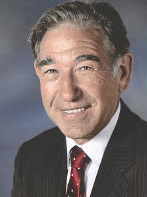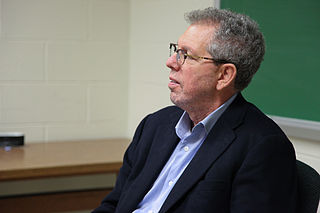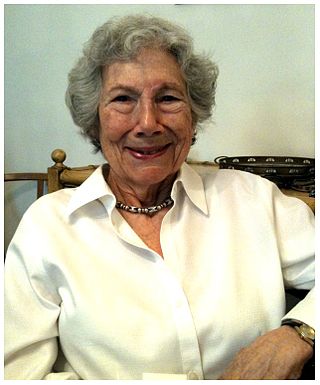Премия Альберта Ласкера за фундаментальные медицинские исследования
Премия Альберта Ласкера за фундаментальные медицинские исследования (англ. Albert Lasker Basic Medical Research Award) — одна из номинаций премии Ласкера, присуждаемых фондом Альберта и Мэри Ласкеров (англ. Lasker Foundation). Премия вручается учёным за фундаментальные исследования, давшие методику, информацию или концепции, которые помогли в изучении и способствовали устранению большого числа заболеваний.
Лауреаты премии
| Год | Лауреат | Обоснование награды |
|---|---|---|
| 1946 | Оригинальный текст (англ.) For contributions to the knowledge of carbohydrate metabolism, which clarify the action of insulin in diabetes. | |
| 1947 | Гомер Смит[англ.] | Оригинальный текст (англ.) For distinguished research on cardiovascular and renal physiology. |
| Освальд Эвери | Оригинальный текст (англ.) For studies on the chemical constitution of bacteria. | |
| 1948 | Оригинальный текст (англ.) For studies of transmethylation as essential to animal nutrition, and for contributions to the structure and synthesis of biotin and penicillin. | |
Рене Жюль Дюбо | Оригинальный текст (англ.) For studies of the antibiotic properties of soil bacteria leading to the discovery of streptomycin. | |
| 1949 | Оригинальный текст (англ.) For contributions to the physiology of circulation and the diagnosis and treatment of heart disease. | |
| Уильям С. Тиллетт[нем.] Л. Р. Кристенсен[нем.] | Оригинальный текст (англ.) For the discovery and purification of the enzymes, streptokinase and streptodornase. | |
| 1950 | Оригинальный текст (англ.) For contributions to the understanding of the genetic control of metabolic processes. | |
| 1951 | Карл Фридрих Мейер[англ.] | Оригинальный текст (англ.) For bacteriological research in parasitology. |
| 1952 | Оригинальный текст (англ.) For fundamentally modifying our knowledge of viruses and the inheritance of characteristics by viruses. | |
| 1953 | Оригинальный текст (англ.) For achievements in explaining the physiology of vision in man. | |
Оригинальный текст (англ.) For the development of immunochemistry. | ||
Оригинальный текст (англ.) For the discovery of the urea and citric acid cycles, which are basic to our understanding of how the body converts food into energy. | ||
| 1954 | Оригинальный текст (англ.) For the discovery of actomyosin, the essential contractible element of muscle. | |
Оригинальный текст (англ.) For the cultivation of the viruses of poliomyelitis, mumps, and measles. | ||
| Эдвин Б. Аствуд[нем.] | Оригинальный текст (англ.) For contributions leading to the control of hyperthyroidism. | |
| 1955 | Карл Виггерс | Оригинальный текст (англ.) For contributions to the understanding of cardiovascular physiology. |
| Карл Пол Линк[англ.] | Оригинальный текст (англ.) For fundamental contributions to our understanding of the mechanism of blood clotting and for the development of methods for the improved treatment of thromboembolic conditions. | |
| 1956 | Карл Мейер[нем.] Фрэнсис Шмитт[англ.] | Оригинальный текст (англ.) For pioneering studies of the biochemical components of connective tissues, contributing to new understanding of arthritis and rheumatic diseases. |
| 1957 | Айзек Старр[англ.] | Оригинальный текст (англ.) For contributions to knowledge of the heart and the circulation, and for the development of the first practical ballistocardiograph. |
| 1958 | Ирвин Пейдж[англ.] | Оригинальный текст (англ.) For contributions concerning the basic mechanisms of hypertension. |
| Теодор Пак[англ.] | Оригинальный текст (англ.) For development of original methods for pure culture of living mammalian cells as a basis for new research in their nutrition, growth, genetics, and mutation. | |
Герхард Шрамм[нем.] Хайнц Френкель-Конрат | Оригинальный текст (англ.) For the discovery of the fundamental role of nucleic acid in the reproduction of viruses and in the transmission of inherited characteristics. | |
Оригинальный текст (англ.) For contributions concerning the causes of cancers, the source of antibodies, and the mechanism of blood cell generation and destruction in human beings. | ||
| 1959 | Альберт Кунс[англ.] | Оригинальный текст (англ.) For the development of the fluorescent method of labelling proteins, a significant tool for the study of infection in human beings. |
| Жюль Т. Фройнд[англ.] | Оригинальный текст (англ.) For the development of immunization procedures against diseases such as tuberculosis, rabies, and poliomyelitis. | |
| 1960 | Джеймс Хиллер[англ.] | Оригинальный текст (англ.) For the design, construction, development, and perfection of the electron microscope. |
Оригинальный текст (англ.) For revealing the structure of the DNA molecule. | ||
Лайонел Пенроуз[англ.] | Оригинальный текст (англ.) For laying the foundation for research in human genetics; and, specifically, to Dr. Neel for his work on thalassemia and sickle cell anemia. | |
| 1962 | Чо Хао Ли[англ.] | Оригинальный текст (англ.) For the identification and isolation of six hormones of the anterior pituitary gland. |
| 1963 | Лайман С. Крэйг[англ.] | Оригинальный текст (англ.) For the countercurrent distribution technique as a method for the separation of biologically significant compounds, and for the isolation and structure studies of important antibiotics. |
| 1964 | Гарри Рубин[англ.] | Оригинальный текст (англ.) For fundamental contributions to our knowledge of the relationship between cancer and cancer-producing DNA and RNA viruses. |
| 1965 | Оригинальный текст (англ.) For determining the chemical structure of an amino acid transfer RNA. | |
| 1966 | Оригинальный текст (англ.) For contributions to the electron microscopy of biological materials. | |
| 1967 | Оригинальный текст (англ.) For extraordinary contributions to biochemical pharmacology. | |
| 1968 | Оригинальный текст (англ.) For deciphering the genetic code. | |
| Уильям Ф. Виндл[нем.] | Оригинальный текст (англ.) For basic discoveries in the field of developmental biology. | |
| 1969 | Оригинальный текст (англ.) For a new concept and a new method for the synthesis of polypeptides and proteins. | |
| 1970 | Оригинальный текст (англ.) For the discovery of cyclic AMP and elucidation of this key chemical mechanism that regulates hormonal action. | |
| 1971 | Оригинальный текст (англ.) For their brilliant contributions to molecular genetics. | |
| 1974 | Людвик Гросс[англ.] | Оригинальный текст (англ.) For the discovery of leukemia- and cancer-inducing viruses in mammals, and the elucidation of their biology and epidemiology. |
| Говард Е. Скиппер[англ.] | Оригинальный текст (англ.) For contributions that laid the foundations for the chemotherapy of cancer. | |
| Сол Шпигельман | Оригинальный текст (англ.) For contributions to molecular biology including techniques of molecular hybridization and the first synthesis of an infectious nucleic acid. | |
Оригинальный текст (англ.) For contributions to the biology of RNA-containing cancer viruses and elucidation of the mode of action of viral genes. | ||
| 1975 | Фрэнк Дж. Диксон[англ.] Генри Дж. Кункель[англ.] | Оригинальный текст (англ.) For contributions to the creation of a new medical discipline, immunopathology. |
Оригинальный текст (англ.) For expanding our knowledge of the interplay between the hypothalamus and the endocrine system. | ||
| 1976 | Оригинальный текст (англ.) For the development of the technique of radioimmunoassay. | |
| 1977 | Оригинальный текст (англ.) For isolating and elucidating prostaglandins. | |
| 1978 | Ханс Костерлитц[англ.] | Оригинальный текст (англ.) For identifying the relation of the opiate receptors to the naturally occurring enkephalins. |
| Джон Хьюз[нем.] | Оригинальный текст (англ.) For demonstrating the specific structure of the enkephalins and the identification of their natural origin. | |
| 1979 | Оригинальный текст (англ.) For contributions to the knowledge of brain function, and the understanding of mental and psychosomatic diseases. | |
Оригинальный текст (англ.) For the development of new techniques for the rapid sequencing of DNA. | ||
| 1980 | А. Дэйл Кайзер[англ.] | Оригинальный текст (англ.) For historic achievements that made recombinant DNA a brilliant reality, and inaugurated a new age of biomedical promise. |
| 1981 | Оригинальный текст (англ.) For the discovery that certain genetic elements are not static, but can move from one location to another on DNA. | |
| 1982 | Оригинальный текст (англ.) For the discovery that oncogenes are present in normal cells. | |
| Рэймонд Л. Эриксон[нем.] | Оригинальный текст (англ.) For contributions to the first identification and characterization of the protein products of oncogenes, thus providing a clearer understanding of cell growth and regulation. | |
| Хидэсабуро Ханафуса[англ.] | Оригинальный текст (англ.) For demonstrating how RNA tumor viruses cause cancer, and elucidating their role in combining, rescuing and maintaining oncogenes in the viral genome. | |
Оригинальный текст (англ.) For the discovery of the first human RNA tumor virus and its association with certain leukemias and lymphomas. | ||
| 1983 | Оригинальный текст (англ.) For the application of cell biology techniques to the study of behavior, revealing mechanisms underlying learning and memory. | |
Оригинальный текст (англ.) For original discoveries that illuminate the brain’s ability to perceive and organize information and to translate sensory impulses into behavior. | ||
| 1984 | Майкл Поттер[англ.] | Оригинальный текст (англ.) For fundamental research into the genetics of immunoglobulin molecules, paving the way for the development of hybridomas. |
Оригинальный текст (англ.) For creating the first hybridomas, a powerful new scientific tool for producing monoclonal antibodies. | ||
| 1985 | Оригинальный текст (англ.) For the discovery of the basic mechanisms controlling cholesterol metabolism, opening the way to a new pharmacologic approach to the treatment of coronary heart disease, the leading cause of death in the Western world. | |
| 1986 | Оригинальный текст (англ.) For the original concept that cell growth is governed by protein molecules, and for the discovery of Nerve Growth Factor (NGF). | |
Оригинальный текст (англ.) For discovering and biochemically defining Epidermal Growth Factor (EGF), which illuminated the dynamics of cell growth. | ||
| 1987 | Оригинальный текст (англ.) For imaginative studies of somatic recombinations in the immune system, detailing in molecular terms the genetics of antibody diversity. | |
Оригинальный текст (англ.) For brilliantly demonstrating that the DNA responsible for antibody production is routinely reshuffled to create new genes during the lifetime of an individual. | ||
| 1988 | Оригинальный текст (англ.) For revolutionary research revealing the enzymatic role of RNA, opening a new universe in molecular biology. | |
Оригинальный текст (англ.) For revelations regarding the ability of RNA processing to convert DNA’s massive store of genetic data to biological use. | ||
| 1989 | Оригинальный текст (англ.) For research revealing how IP3 governs the intracellular level of calcium and orchestrates the major activities of the cell. | |
Оригинальный текст (англ.) For the discovery that G-proteins carry signals that regulate vital processes within cells. | ||
Оригинальный текст (англ.) For the discovery of protein phosphorylation and the mechanistic understanding of protein kinase enzymes. | ||
Оригинальный текст (англ.) For the discovery that carcinogens trigger cell growth by activating protein kinase C. | ||
| 1991 | Оригинальный текст (англ.) For fundamental research on the Bithorax Complex, which established the role of homeotic genes in the development of cell patterns and provided a foundation for current studies of embryonic development. | |
Оригинальный текст (англ.) For charting new paths in developmental biology through investigations that led to the discovery of nearly all genes responsible for organizing basic body patterns. | ||
| 1993 | Оригинальный текст (англ.) For landmark discoveries concerning the processes by which intercellular proteins are targeted across cell membranes. | |
| 1994 | Оригинальный текст (англ.) For of the discovery of prions, a new class of infectious agents—opening the way to under-standing baffling neurodegenerative diseases. | |
| 1995 | Оригинальный текст (англ.) For the discovery of the Major Histocompatibility Complex (MHC) restriction of T-cell recognition. | |
Оригинальный текст (англ.) For pioneering the isolation of class I and class II MHC proteins and their peptide complexes. | ||
| Эмиль Унануе[англ.] | Оригинальный текст (англ.) For seminal discoveries in antigen processing and MHC-peptide binding which deciphered the biochemical basis of T-cell recognition. | |
Оригинальный текст (англ.) For visualizing the three-dimensional structures of class I and class II proteins and their complexes with antigens and superantigens. | ||
| 1996 | Оригинальный текст (англ.) For discoveries concerning the endo-thelium-derived relaxing factor (EDRF), now known to be nitric oxide, a signaling molecule in the cardiovascular system. For the ingenious elucidation of the cyclic GMP signaling pathway of nitric oxide and for essential discoveries that led to establishing the link between endothelium-derived relaxing factor and nitric oxide. | |
| 1997 | Марк Ташне | Оригинальный текст (англ.) For elegant and incisive discoveries leading to the understanding of how regulatory proteins control the transcription of genes. |
| 1998 | Ёсио Масуи[англ.] | Оригинальный текст (англ.) For pioneering genetic and molecular studies that revealed the universal machinery for regulating cell division in all eukaryotic organisms, from yeasts to frogs to humans. |
| 1999 | Клэй Армстронг[англ.] Бертил Хилл[англ.] | Оригинальный текст (англ.) For elucidating the functional and structural architecture of ion channel proteins, which govern the electrical potential of membranes throughout nature, thereby generating nerve impulses, and controlling muscle contraction, cardiac rhythm, and hormone secretion. |
| 2000 | Оригинальный текст (англ.) For the discovery and recognition of the broad significance of the ubiquitin system of regulated protein degradation, a fundamental process that influences vital cellular events, including the cell cycle, malignant transformation, and responses to inflammation and immunity. | |
| 2001 | Оригинальный текст (англ.) For the development of a powerful technology for manipulating the mouse genome with exquisite precision, which allows the creation of animal models of human disease. | |
| 2002 | Оригинальный текст (англ.) For discoveries revealing the universal molecular machinery that orchestrates the budding and fusion of membrane vesicles — a process essential to organelle formation, nutrient uptake, and secretion of hormones and neurotransmitters. | |
| 2003 | Роберт Редер | Оригинальный текст (англ.) For pioneering studies on eukaryotic RNA polymerases and the general transcriptional machinery, which opened gene expression in animal cells to biochemical analysis. |
| 2004 | Пьер Шамбон Элвуд Дженсен | Оригинальный текст (англ.) For the discovery of the superfamily of nuclear hormone receptors and elucidation of a unifying mechanism that regulates embryonic development and diverse metabolic pathways. |
| 2005 | Эрнест Маккаллок[англ.] Джеймс Тилл[англ.] | Оригинальный текст (англ.) For ingenious experiments that first identified a stem cell — the blood-forming stem cell — which set the stage for all current research on adult and embryonic stem cells. |
| 2006 | За предсказание и открытие теломеразы, РНК-содержащего фермента, который защищает хромосомы и сохраняет целостность генома. | |
| 2007 | За открытие дендритных клеток — важнейшего компонента иммунной системы, которые инициируют и регулируют реакцию организма на чужеродные антигены. | |
| 2008 | За открытия и исследования разнообразного мира молекул РНК, которые регулируют функции гена в растениях и животных. | |
| 2009 | Оригинальный текст (англ.) For discoveries concerning nuclear reprogramming, the process that instructs specialized adult cells to form early stem cells — creating the potential to become any type of mature cell for experimental or therapeutic purposes. | |
| 2010 | За открытие лептина, — гормона, регулирующего аппетит и вес тела, что способствовало началу изучения генетических причин ожирения. | |
| 2011 | Оригинальный текст (англ.) For discoveries concerning the cell’s protein-folding machinery, exemplified by cage-like structures that convert newly made proteins into their biologically active forms. | |
| 2012 | Michael Sheetz[англ.] James Spudich[англ.] | Оригинальный текст (англ.) For discoveries concerning cytoskeletal motor proteins, machines that move cargoes within cells, contract muscles, and enable cell movements. |
| 2013 | Ричард Шеллер | Оригинальный текст (англ.) For discoveries concerning the molecular machinery and regulatory mechanism that underlie the rapid release of neurotransmitters. |
| 2014 | Оригинальный текст (англ.) For discoveries concerning the unfolded protein response — an intracellular quality-control system that detects harmful misfolded proteins in the endoplasmic reticulum and signals the nucleus to carry out corrective measures. | |
| 2015 | Стивен Элледж | За открытие и исследование процесса саморепарации ДНК — основного механизма, который защищает геномы всех живых организмов |
| 2016 | Оригинальный текст (англ.) For the discovery of the pathway by which cells from humans and most animals sense and adapt to changes in oxygen availability – a process essential for survival. | |
| 2017 | Майкл Холл | Оригинальный текст (англ.) For discoveries concerning the nutrient-activated TOR proteins and their central role in the metabolic control of cell growth. |
| 2018 | Чарльз Дэвид Эллис Майкл Грюнштейн | Оригинальный текст (англ.) For discoveries elucidating how gene expression is influenced by chemical modification of histones—the proteins that package DNA within chromosomes. |
| 2019 | Макс Дэйл Купер Жак Миллер | За их открытие двух отдельных классов лимфоцитов, B и T-клеток — монументальное достижение, которое обеспечило принцип организации адаптивной иммунной системы и положило начало современной иммунологии |
| 2020 | Премия не присуждалась | |
| 2021 | Карл Дейссерот Петер Хегеман Dieter Oesterhelt[англ.] | Оригинальный текст (англ.) For the discovery of light-sensitive microbial proteins that can activate or silence individual brain cells and for their use in developing optogenetics—a revolutionary technique for neuroscience. |
| 2022 | Richard Olding Hynes[англ.] Erkki Ruoslahti[англ.] Timothy A. Springer[англ.] | Оригинальный текст (англ.) For discoveries concerning the integrins—key mediators of cell-matrix and cell-cell adhesion in physiology and disease. |
| 2023 | Демис Хассабис John Michael Jumper[англ.] | Оригинальный текст (англ.) For the invention of AlphaFold, a revolutionary technology for predicting the three-dimensional structure of proteins. |
















